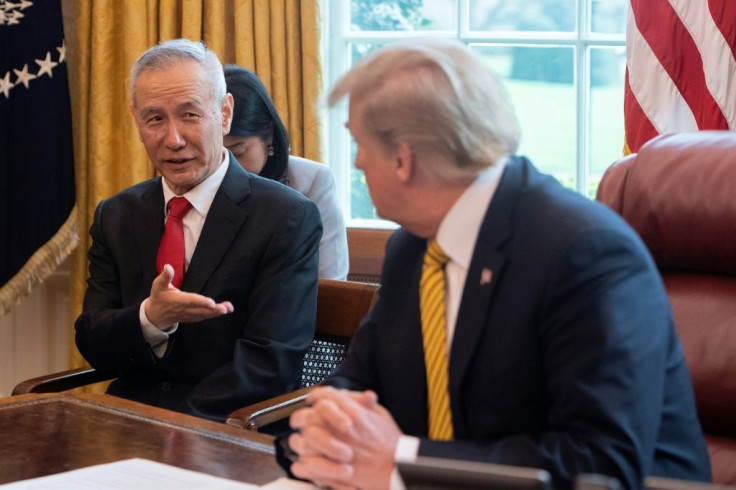US - China Trade War: Trump Administration Ready To Lift Tariffs?

KEY POINTS
- U.S. and Chinese officials sign a phase one trade deal Wednesday
- $360 billion in tariffs on Chinese goods will remain in place for at least the next 10 months
- The U.S. trade deficit with China has fallen, presumably as a result of the tariffs
Removing the tariffs President Trump imposed on Chinese goods reportedly will depend on compliance with the phase one trade agreement to be signed this week and likely will continue through the November presidential election, it was reported Tuesday.
Bloomberg, quoting people familiar with the issue, reported an administration review of $360 billion in tariffs on Chinese imports under the trade deal will take at least 10 months. The review plan is not part of the deal’s text, which will not be released until the deal is signed.
The report came as White House economic adviser Peter Navarrro argued in a Wall Street Journal op-ed that the Trump tariffs have been good for the U.S. economy and actually have led to more jobs and higher wages, and have not contributed to inflation.
The trade war with China also has led to a reduction in the U.S. trade deficit with China, with Chinese exports to the U.S. falling 12.5%.
The phase one trade deal is set to be signed Wednesday. It includes pledges by China to buy $200 billion in U.S. goods, including $80 billion in manufactured goods; in exchange, the U.S. removed China from its list of currency manipulators.
As negotiations dragged on, the administration canceled $120 billion in new tariffs that had been scheduled to go into effect Dec. 15.
The text of the deal reportedly includes a pledge from China to buy $50 billion in energy products and to double its agricultural purchases to $40 billion, largely soybeans, nuts, fruits, pork, poultry, corn and sorghum, as well as ethanol by-products.
The deal also includes intellectual property protections. If the U.S. determines the safeguards are not being followed, it will be able to reimpose tariffs unilaterally within 90 days, Navarro said Monday.
The World Bank last week blamed the U.S.-China trade war for a slower-than-expected recovery in global trade.
But Navarro argued economists are using the wrong models when it comes to assessing the impact of tariffs, ignoring the new investment the levies induce. He said analysts also have not paid enough attention to how much the U.S. has suffered because of open trade.
“Over time this tariff-induced investment [in the steel industry, for example], along with lower taxes and sensible deregulation, will boost growth and job creation. Higher domestic production will also help offset any price hikes from the tariffs -- steel is cheaper now than when the current tariff was imposed,” Navarro argued.
The Wall Street Journal reported China’s trade surplus with the U.S. fell to $298.5 billion in 2019, down from $322.8 billion the preceding year. U.S. Census Bureau data through November pegged the U.S. trade deficit with China at $320.8 billion, about $60 billion less than through the same period of 2018.
© Copyright IBTimes 2024. All rights reserved.






















